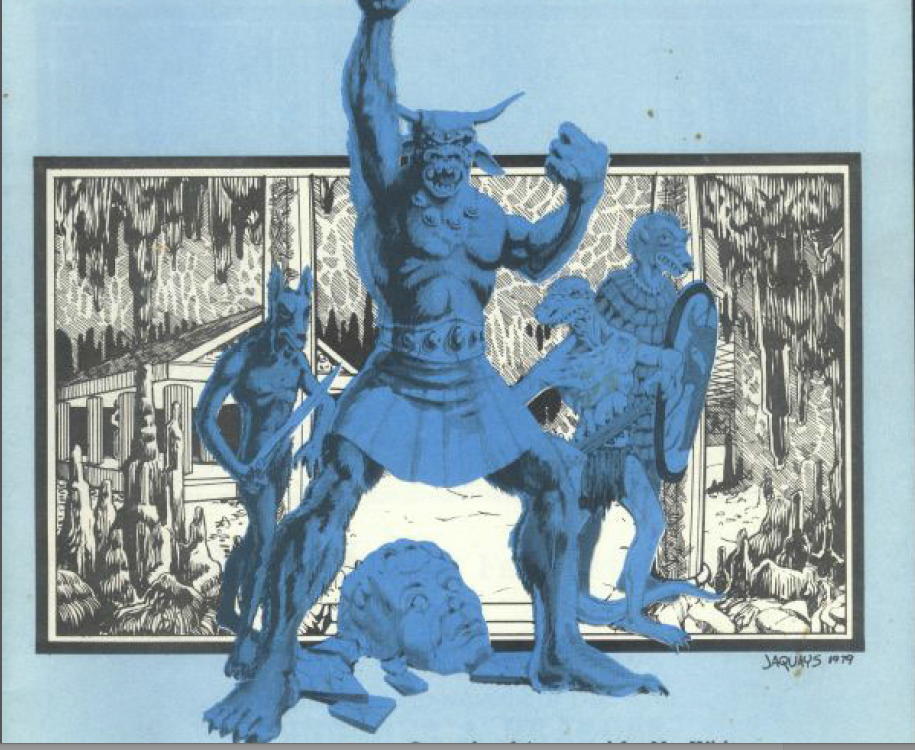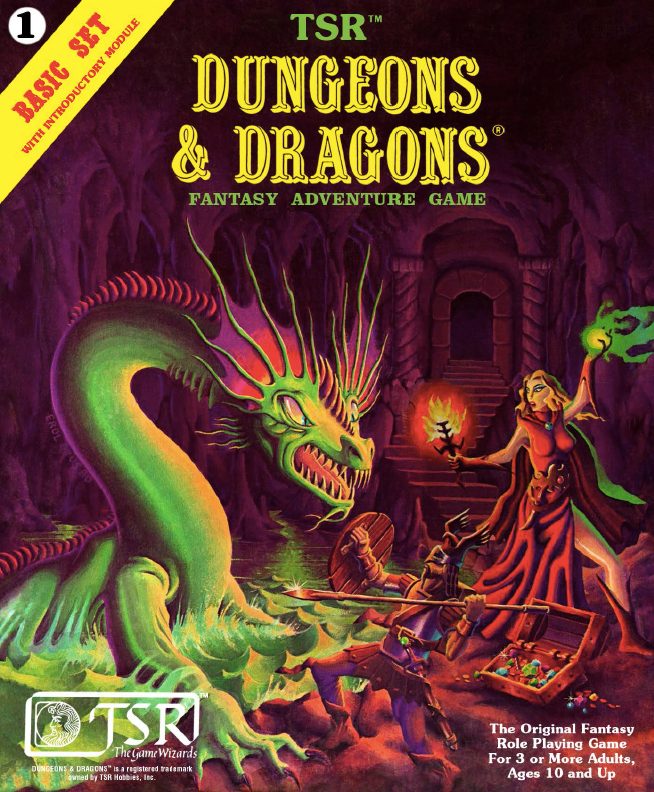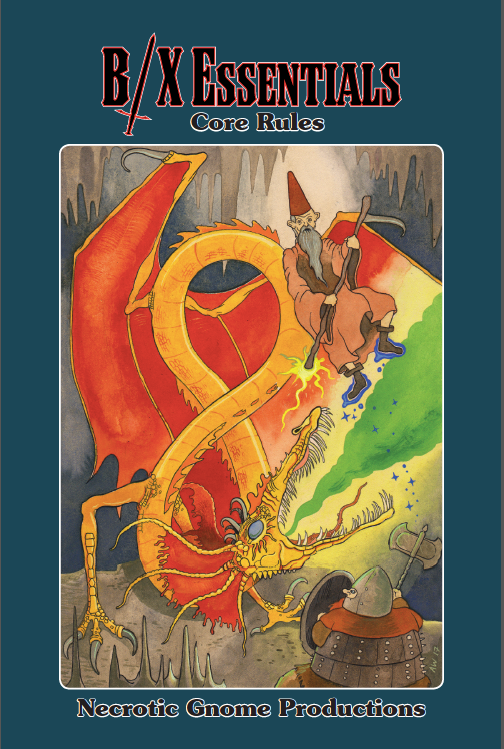Thursdays in Thracia, Part 0
Inspired largely by this post by Luke Crane, designer of The Burning Wheel, and this series of streams by Adam Koebel, co-designer of Dungeon World, I have decided to run some B/X Dungeons & Dragons, as close to rules as written as possible. I’m going to be documenting the experience here.
Over the last 8 years or so, I’ve played quite a few role playing games, beginning with Dungeons & Dragons 3.5, dabbling in Shadowrun, Apocalypse World, Torchbearer, Dungeon World, etc. Most recently I am running Blades in the Dark and Stars Without Number.
Over the last couple years, I’ve read a lot of OSR material. The OSR, or Old-School Renaissance, is a sort of subculture within the subculture of Dungeons & Dragons. OSR players generally use early versions of the D&D rules or slight variations thereof, to play D&D. Much of the appeal is that the rules are lightweight, demanding of the players, and very easy to hack and house-rule.
I’ve run a good bit of Dungeon Crawl Classics and a session or two of Lamentations of The Flame Princess. While a solid definition of old school play is hard to pin down and varies from table to table, there are certain parts of the discussion that appeal to me. Experience points for gold, simple player characters, morale checks, et cetera, all make a kind of intuitive sense to me on paper, but I want to really put the old rules to a dedicated test. A lot of OSR Dungeon Masters seem to take to hacking the rules up right off the bat, turning the game into exactly the thing they want. The OSR is full of amazing, creative work that pulls the game in myriad directions. It appeals to me on a visceral level that the sort of sterile complexity of the official Dungeons & Dragons 5e material does not.
There’s some part of me, though, that feels like that’s something to be earned. That if I am going to be drifting the game in my own direction, I need to have a solid understanding of the original, “intended” experience. This is probably the same part of my brain that generates imposter syndrome, and the necessity to eat lunch at exactly noon every day.
Also, I hear B/X, taken on its own terms and played as written, is a hell of a fun game.
The Dungeon
Now that I’ve justified myself, here’s what I am up to: I’m going to be running a rotating / open group of players through The Caverns of Thracia by Jennell Jaquays. We’re going to get together every-other Thursday until the players “beat” the dungeon or enough of us decide we aren’t having fun anymore and stop. Or, like most of these campaigns end, schedules shift to such a degree that the game becomes untenable.
[caption id=“attachment_312” align=“aligncenter” width=“915”] Jennell Jaquays’ Cover art for The Caverns of Thracia[/caption]
Jennell Jaquays’ Cover art for The Caverns of Thracia[/caption]
The Caverns of Thracia is a third party “Fantasy Game Aid” published in 1979 by Judges Guild. It’s a massive, multi-level complex, intricately interconnected, and featuring multiple factions with competing goals. It’s full of supernatural weirdness and really tough encounters. It’s themed as generally ancient Greek. It’s influential in the world of dungeon design, so much so that Jaquays’ name has been coined into a verb for designing deeply interconnected, explorable game spaces. (FYI: That last link is to a post written before Jaquays came out as a trans woman, and it uses the name and pronouns assigned her at birth.)
I am perhaps biting off more than I can chew with this one, but we’ll see! It’s apparently a masterpiece, and anyway at least one of my players has already run through The Keep on the Borderlands, so that classic is out.
The Rules
I’m going to be running the game using the Basic / Expert Dungeons & Dragons rules (B/X from now on), published by TSR in 1981 as two boxed sets. Most OSR clones use these rules as a base, and they are widely considered one of the best expressions of the game. These rules come from a time when Dungeons & Dragons and Advanced Dungeons & Dragons existed as separate products, published in parallel. These are the rules for the former, a much more approachable and straightforward game than the latter.
[caption id=“attachment_314” align=“aligncenter” width=“654”] Dungeons & Dragons, for adults ages 10 and up.[/caption]
Dungeons & Dragons, for adults ages 10 and up.[/caption]
For ease of reference and use at the table, I’m going to be using Gavin Norman’s excellent B/X Essentials, a highly usable collection of booklets that present the original rules as accurately and clearly as possible.
[caption id=“attachment_315” align=“aligncenter” width=“504”] B/X Essentials, by Gavin Norman[/caption]
B/X Essentials, by Gavin Norman[/caption]
Of course, running B/X as close to by-the-book as possible necessitates a degree house ruling and DM decisions on the fly. D&D’s ludographical parents were miniature wargames in which player-generals could try any reasonable action, and necessitated an impartial referee to act as a kind of on-the-fly physics engine and setter of precedent. In carrying on this tradition, B/X has some gaps. It notably lacks any real unified resolution system, something which would be almost unthinkable by modern RPG design standards. As my players and I come up with rulings for our table, I will include them in session reports.
The only tweaks I am starting with are to increase XP rewards (I’ll likely double or even triple them), and to let the players create characters with 2,000 beginning XP. I made this decision because The Caverns of Thracia is a tough beast right from the get-go, with few early rewards, that supports a wide range of levels. The text cryptically indicates that it is for parties of levels “one and higher.” I am eager to see how the game changes as characters become more powerful. At 2,000XP, fighters, thieves, clerics and halflings will begin at 2nd level, with varying progress towards 3rd. Magic-Users, Elves, and Dwarves will be at 1st going on 2nd.
Prep
Preparing to run a published module was no joke, back in the day. The Caverns of Thracia is over 70 pages long, and would likely be published as a miniature campaign today. Dungeons were large beasts in 1979, as the game pretty much assumed that’s where you’d spend most if not all of your time.
I printed out the book and put it in a three-ring binder. I’ve skimmed the whole dungeon, and taken detailed notes on additional print-outs of the maps of the surrounding area, and the first and second levels. I should be safe for at least a couple sessions. I hope.
Before the first session, I’ll be rolling up random encounters for the first two levels, which I can pull out in order when the dice indicate a wandering monster. Monster checks happen on a 1-in-6 chance checked every single turn in the caverns. It’s brutal.
I bought some cheap miniatures from Reaper to represent an array of PC’s, as well as the most common enemies encountered in the dungeon. I’ll be using a gridded Chessex battle mat to track marching order and combat encounters. I have painted (poorly) some of the minis, but by and large they’ll be white plastic and gray pewter.
Lastly, I pasted the charts from B/X Essentials The World’s Greatest Screen that I thought I would make the most use of into a few pages to print out make a custom DM screen using , from Hammerdog Games.
Hello There
You may notice that this is the first post on this site. Welcome! I plan on continuing to post session reports on Thursdays in Thracia as long as the game goes. Our first session is tonight! Expect other musings on games of all kinds as well.